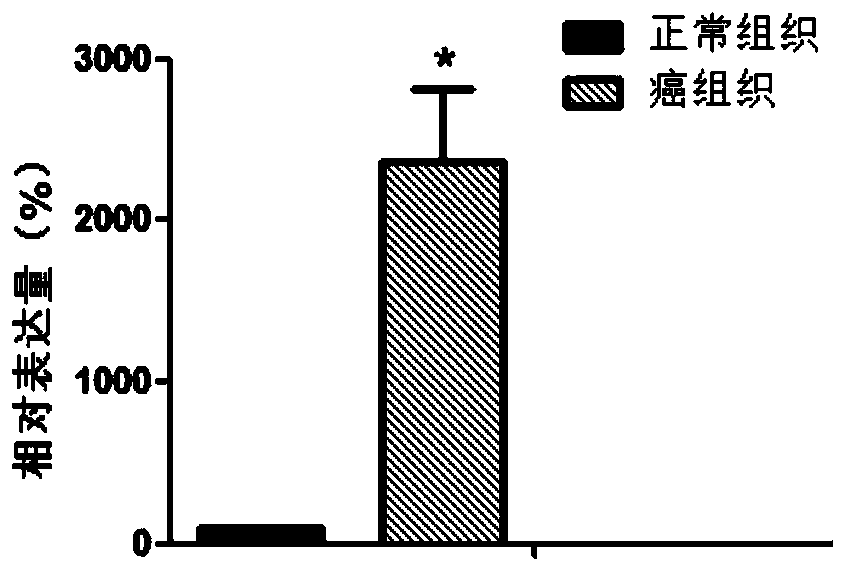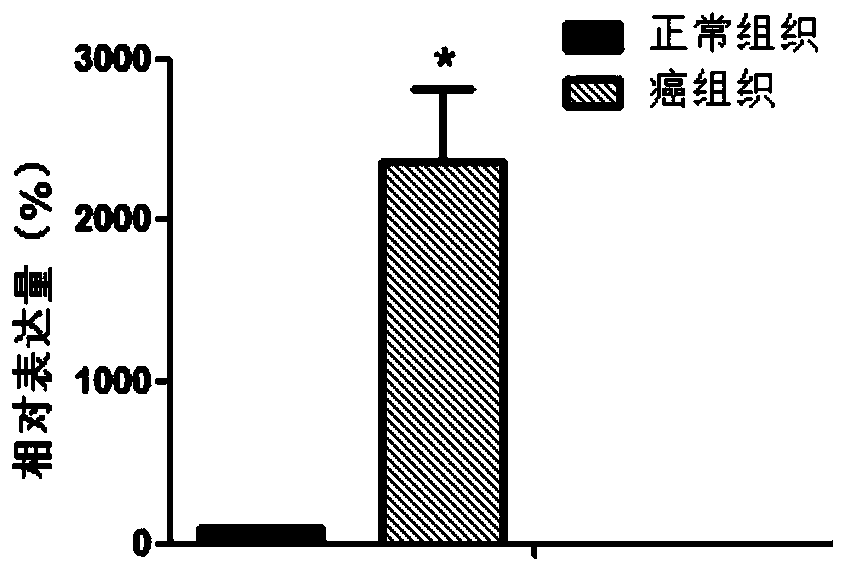Diagnostic marker of clear cell renal cell carcinoma-c16orf74 gene
A technology of renal clear cell carcinoma and gene, applied in the field of biomedicine, can solve the problems of unsatisfactory immunotherapy effect, limited curative effect, and 5-year survival rate of less than 10%
- Summary
- Abstract
- Description
- Claims
- Application Information
AI Technical Summary
Problems solved by technology
Method used
Image
Examples
Embodiment 1
[0061] Example 1 Screening of differentially expressed genes in renal clear cell carcinoma tissue
[0062] 1. Sample collection
[0063] The 5 cases were all ccRCC patients admitted to the urology department of the hospital. All 3 cancer tissue specimens were frozen in a liquid nitrogen tank 0.5h after radical renal resection, and 2 normal kidney tissue specimens were taken from the normal area of T1 renal cancer that was more than 5cm away from the primary tumor. All specimens were confirmed by routine pathological examinations, and were reviewed again by the hospital pathology department before the experiment. The retention of experimental specimens was approved by patients or family members.
[0064] 2. Extraction of total RNA from sample
[0065] Take about 50-100 mg of each of the above-mentioned tissue samples, add Trizol to extract total RNA, use Beckman DU530 ultraviolet spectrophotometer to determine the concentration and purity of the samples, and then use Agilent BioAna...
Embodiment 2
[0075] Example 2 Verification of differentially expressed genes in large samples
[0076] The selection of high-throughput sequencing suggested that the differentially expressed C16orf74 gene between renal clear cell carcinoma tissue and normal kidney tissue was the research goal for large sample verification.
[0077] 1. Tissue acquisition and processing: According to the method in Example 1, 45 cases of renal clear cell carcinoma tissue and 45 cases of normal renal tissue were collected.
[0078] 2. RNA extraction
[0079] The RNA extraction was performed according to the method of Example 1.
[0080] 3. Reverse transcription synthesis of cDNA
[0081] Take 2μg of total RNA each, add 5μl T7 promoter primer, add nuclease-free water to the total reaction volume to 11.5μl, water bath at 65℃ for 10min, place on ice for 5min, then add 8.5μl cDNA Master Mix (containing 5x first strand Buffer 4μl, 0.1mol / L DTT 2mol / L. 10mol / L dNTP mix 1μl, reverse transcriptase MMLV 1μl, RNase inhibitor 0.5μ...
PUM
 Login to View More
Login to View More Abstract
Description
Claims
Application Information
 Login to View More
Login to View More - R&D
- Intellectual Property
- Life Sciences
- Materials
- Tech Scout
- Unparalleled Data Quality
- Higher Quality Content
- 60% Fewer Hallucinations
Browse by: Latest US Patents, China's latest patents, Technical Efficacy Thesaurus, Application Domain, Technology Topic, Popular Technical Reports.
© 2025 PatSnap. All rights reserved.Legal|Privacy policy|Modern Slavery Act Transparency Statement|Sitemap|About US| Contact US: help@patsnap.com


